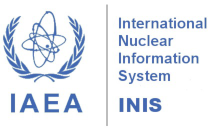New article published in 12(4B) - ENFIR/INAC 2024
Synthesis and characterization of Au- 198 nanoparticles for radiotherapy
Abstract: In recent years, rapid progress in nanotechnology has stimulated growing interest in nanoparticle research, particularly in the fight against cancer, a leading cause of death worldwide. Currently, gold nanoparticles (AuNPs) are being studied as an alternative to conventional cancer treatments, which, despite their effectiveness, face challenges such as side effects due to low selectivity. This work focuses on the synthesis of AuNPs functionalized with polyethylene glycol (PEG) in both their non-radioactive and radioactive forms and on their physicochemical properties. The AuNPs functionalized with PEG were produced using the adapted Turkevich method, and their physicochemical characteristics were analyzed using Dynamic Light Scattering with Zeta Sizer (DLS), UV-Vis spectroscopy, and transmission electron microscopy (TEM), assessing the effect of the amount of sodium citrate, as a reducing agent, on the size of the nanoparticles. The results showed a hydrodynamic diameter of 22.62 nanometers, a surface charge of - 0.1269mV, and an average size of 12.12nm as measured by TEM. The studies were conducted with radioactive gold-198 nanoparticles, and their presence was confirmed by an HPGe detector. Read full article.
Depletion and inventory calculation for the new fuel of IEN's Argonauta reactor
Abstract: This paper presents fuel depletion simulations for the Argonauta research reactor using the MCNP6® 1.0 code. The actinide fission yield inventory for the reactor's current U3O8 fuel was conducted from 1965 to 2018 using operating parameters obtained from a previous study. Inventories were also generated for hypothetical scenarios involving the reactor's new fuel under development (U3Si2). The U3Si2 analysis indicated a mass increase for all highlighted actinides across the hypothetical scenarios. Regarding fission product yields, results showed that after 20 years of operation at 1000 W (the new estimated operating power), the mass of all highlighted isotopes was higher than for the same period at 340 W (the current power). These findings are relevant for licensing procedures of the new fuel and for assessing potential accident scenarios, since transitioning to U3Si2 fuel and increasing reactor power may impact the isotopic inventory. Read full article.






















